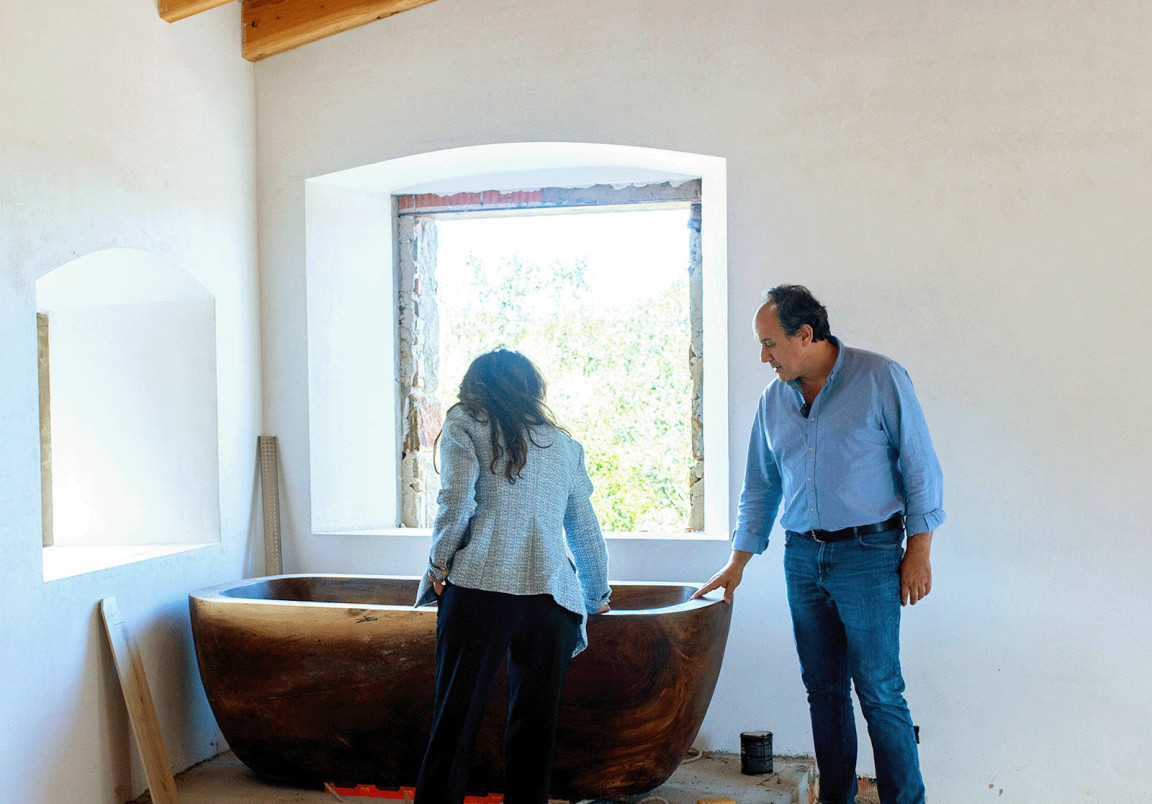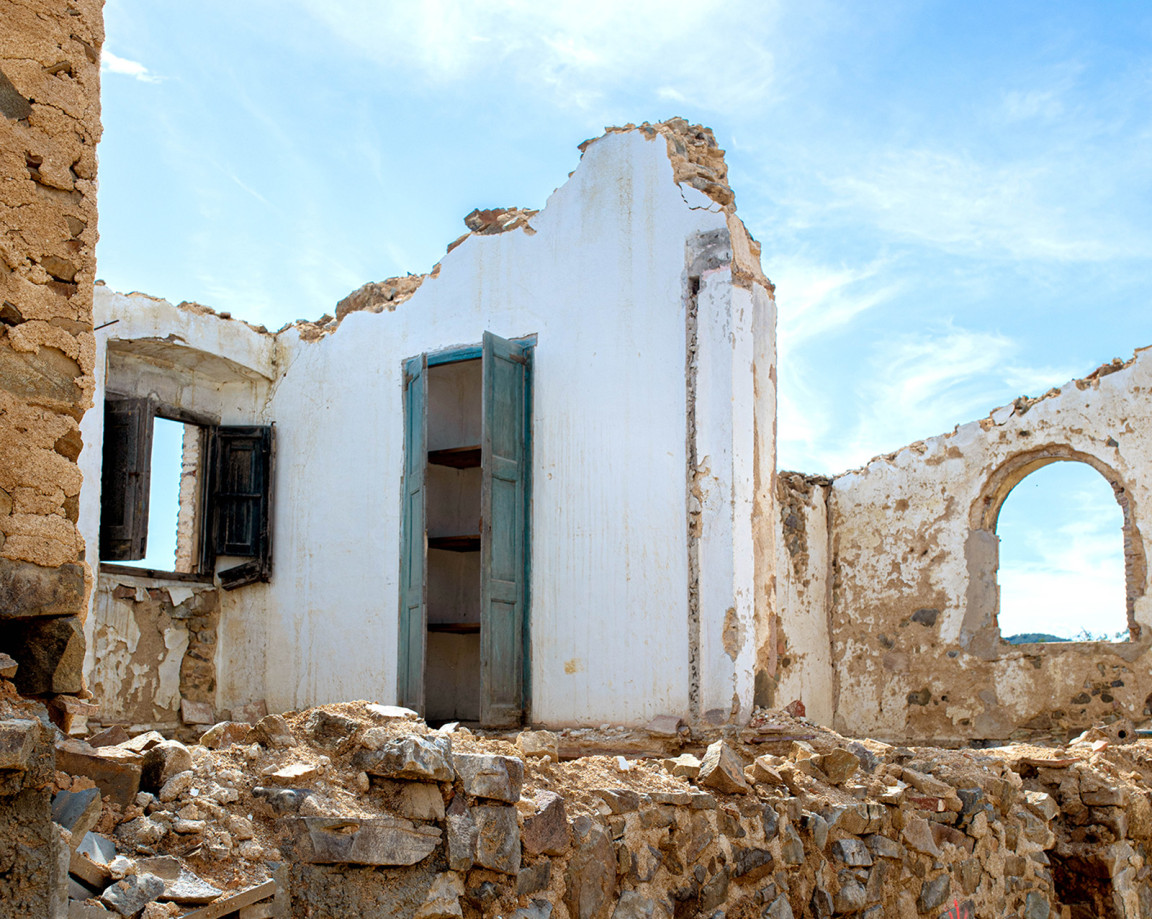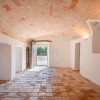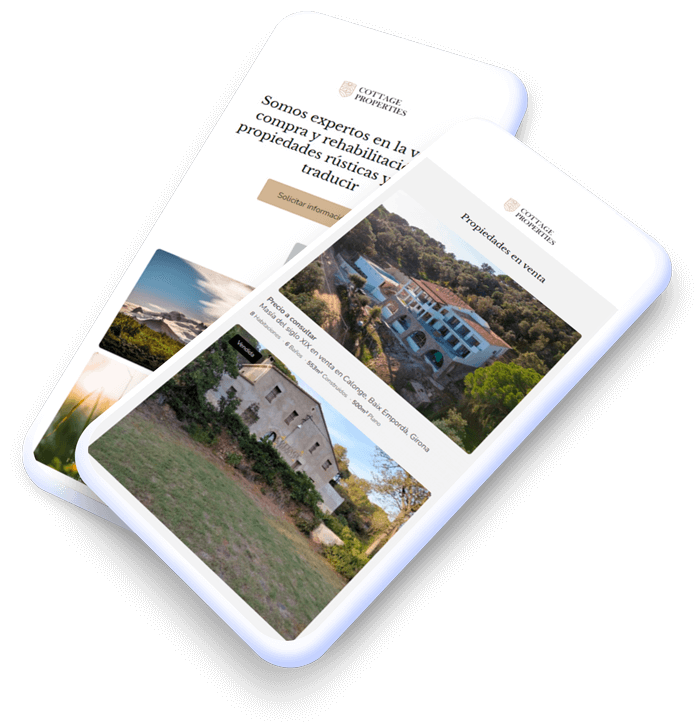Restoring a masía in Spain: 5 steps to avoid blown budgets and delays
Post published in Reforms
In this article, our co-director guides you through the five essential steps to avoid cost overruns and delays during a masía restoration.

Renovating a farmhouse in Catalonia is a dream for many, but it's a process that needs caution.
After more than 30 years of rehabilitating masías and farmhouses at Cottage Properties, we've heard some alarming stories. For example, the restoration of a multi-million-euro masía (not our project) that received a stop-work order (orden de paralización) when the project was 50% complete.
To this day, it remains unfinished.
The goal isn't to discourage you, but to warn that a restoration can lead to delays and cost overruns if not carried out with care.
For this article, we have interviewed Pere Crosas, director of our rehabilitation service, who will guide you through the five essential steps we follow in each of our projects.
If you'd like to get a free consultation with Pere about your rehabilitation project, you can fill out the form on our contact page.
Lesson in La Selva: Renovation of a multi-million-euro masía halted at 50% completion
A few years ago, some potential clients contacted me about renovating a masías in a village in La Selva, in Girona.
From the very beginning, I warned them: the works they had in mind would not be approved by the town council (ayuntamiento).
I advised them to rethink the project.
But they decided to move forward with another architectural firm.
A few years later, I received news that they had received a stop-work order when the work was 50% complete. To this day, this stunning masía remains unfinished – and with it, the capital invested has also been frozen.
As in every sector, there are differing opinions and it's hard to know who to trust.
But renovating a masía or country house, whether with a specialised company or on your own, doesn't have to be done under the fear of a stop-work order.
Our philosophy after 30 years without a single stop-work order in Spain
At Cottage Properties, our philosophy is simple: we do things the right way.
We often hear from real estate agents who, in order to sell a rustic house, suggest ideas such as opening large windows, knocking down walls, or moving entire buildings within the plot to improve the views.
But in reality, these are ideas that cannot be done.
For example, when a rural property is registered in the Property Registry, there are regulations in Catalonia which prohibit a change of location. In addition, each municipality has its own catalogue of masías with rules about what can and cannot be done.
The restrictions are even stricter regarding buildings with heritage protection or located in a natural park.
A good example is the rehabilitation of Mas dels Arbres, a project of ours that was shown on Spanish television, where every decision was made under the stricter building regulations of a natural park.

Preserving the character of your masía doesn't mean giving up your vision
Nobody likes to hear "it's not possible."
But in my experience, 99% of clients who align their vision with building regulations end up thanking us for it.
And not only because they avoid delays, penalties or stop-work orders, but because the rules exist to preserve the authenticity of Catalan masías. And it's totally possible to preserve the character and history of a historic farmhouse without sacrificing aesthetics and modern amenities.
For example, during a renovation we always use materials that are zero-kilometre:
We collect, clean, and reuse old stones that have fallen on the plot itself
We install wooden beams cut and dried in Montseny, in the Vallès Oriental region
We use cork from recycled wine stoppers for insulation
We apply lime from Catalonia to the walls, which doesn't trap moisture like cement or plaster
We source handmade tiles from artisans in Vic, in the Osona region
Our clients are always surprised that nowadays, the price of these local materials isn't more expensive than conventional materials. It not only helps the local council approve a renovation, but it also creates a masía full of history and meaning.
That's why our method always consists of seeking creative solutions within the rules – never against them.

Restoring masías in Spain: 5 steps to avoid blown budgets and delays
After more than 30 years of renovating masías and castles, we've developed a five-step method that allows us to create spectacular projects while still complying with regulations and rules.
Below, I'll explain each of these steps.
1. Professional advice
Estimated timeline: 1 week
The most common question regarding masía renovations is about the costs.
Therefore, at Cottage Properties, we always recommend getting advice from an expert before starting a project to rehabilitate a masía, castle or country house.
Knowing the approximate cost of a restoration in advance, along with the applicable local regulations, allows you to assess whether it's worth pursuing a specific property.
You can consult by phone or video call. However, in our experience, it's best to have our surveyor or architect accompany you to the farmhouse of interest to prepare a basic renovation cost proposal.
We offer this advice free of charge within our services for buyers.
We also offer a consulting service for those who are considering carrying out the work with their own team – or who haven't yet decided. We can prepare the basic renovation project, ensuring you can make decisions with clarity and certainty.
If you are interested in requesting a consultation, you can fill out the form on our contact page.

2. First sketches
Estimated time: 1-3 months
If you find a masía that fits your vision and budget, we move on to the second phase.
Here, we always recommend spending 1 to 3 months in the initial drafting phase to define the overall vision of the project. This phase prevents falling in love with ideas that later prove impossible and ensures that any project stays within legal frameworks.
We recommend visiting the property in the morning, midday, and the afternoon to decide on the best orientation for each space. During these visits, you'll need to consider everything:
What structural parts of the masía should be maintained?
How do you want the property to be used on a daily basis?
What spaces do I need to adapt to a modern lifestyle?
Should bedrooms face south?
Should the kitchen receive western light at dusk?
Before 2019, many country houses were designed with large surfaces but small kitchens, as they were often used as weekend homes. Nowadays, clients often seek larger kitchens and spaces that allow for more comfortable daily living in the countryside.
Others dream of planting olive trees to produce their own oil, or of creating a family garden.
We take all of this into account in the sketching phase.
Also, at Cottage Properties, we always offer our clients the opportunity to visit our rehabilitation projects. One that's just started, another that's been in operation for a year, and a third that's almost ready to move in. If you have the opportunity to visit projects near you and speak with owners, I recommend doing so.
The result of these 1–3 months is a set of plans and diagrams that capture your personal vision and, with the supervision of an expert, you know they comply with current regulations.

3. Basic project (proyecto básico)
Estimated time: 1 month
The basic project is the document that defines the key elements of the project – windows, doors, heights, porches, and general layout.
It serves as the basis for preparing the executive project, which is ultimately submitted to the town council to obtain the building permit.
So why not jump straight to the executive project?
In our experience, doing so would be a mistake. The basic project allows you to explore different options and tailor the proposal to the reality of regulations, budget, and client expectations.
For example, I have seen how an architect with no experience in rural areas designed a five-meter living room without intermediate supports, which would have blown the client's entire budget in only that part of the masía. I have also seen projects where an architect proposed expanding the farmhouse by 50% of the original surface area, when regulations only allow expansions of up to 20%.
This shows that a single detail can put the entire project at risk.
That's why I recommend hiring your own surveyor or site manager – someone with practical experience who can look at a basic project and say, "This isn't possible within the budget."
At Cottage Properties, we have in-house quantity surveyors in our team, and we maintain relationships with 4-5 architects so we can always choose one that fits both the vision and the budget.
4. Executive project (proyecto ejecutivo)
Estimated time: 1-2 months
Whether you're renovating a ruin, surrounded by forests, or in an isolated area of Spain, the executive project is essential.
This document contains the final project – with detailed plans, materials, budgets, and costs – and is submitted to the town council for approval and a building permit.
If this step is ignored, the project may face a stop-work order at any time.
And this isn't alarmist: it happens in Spain. In 2023, for example, the Council of Ibiza ordered the demolition of a rural property built on rural land, in addition to imposing a fine exceeding 4.4 million euros, after the owners disobeyed an order to stop the works.
Therefore, if we want a renovation without surprises, this fourth phase usually takes 1-2 months to prepare the project, deliver it, and, if everything is in order, receive the building permit.

5. Rehabilitation
Estimated time: 1-3 years
A masía restoration project is a long process.
The fastest we've completed at Cottage Properties has taken around 15 months – from initial consultation to delivery of the property. But it typically extends up to two years.
The estimated timeframe depends largely on the size of the farmhouse. At Cottage Properties, our team can typically complete around 500 square meters in a year.
But size isn't everything.
For a builder with no experience in rural construction, renovating a farmhouse is a learning curve. A 300-year-old stone wall isn't the same as brick walls. It requires knowledge of working with traditional construction.
Also, many farmhouses in need of renovation are sold without electricity or water supply. Wells must be dug, and photovoltaic systems must be installed. When these installations are combined with bathrooms, jacuzzis, or an indoor pool, the work will take time.
So, you have to understand the project you're getting into beforehand to avoid frustration.

Haven't bought your masía yet? Read this before signing any deed
In early 2025, our co-director Àngels Sabater received a call from a frustrated buyer.
He was very interested in purchasing a masía in need of renovation, but the real estate agency assisting him couldn't answer questions about the cost. Instead of giving him an estimate, they referred him to an architect who was asking up to €15,000 to prepare a project... and with several weeks of waiting ahead.
We always recommend getting an idea of the renovation costs before signing the purchase agreement for a country house. But the reality is that, for a buyer, it's not easy to access this type of advice.
I understand the frustration.
That's why at Cottage Properties, we decided to bring our real estate and restoration divisions under one roof. This way, we can bring our surveyor along to assist buyers and move forward together through the initial project phase at no additional cost to the client.
This allows you to find a masía that fits your vision and budget, and provides the peace of mind of knowing that the renovation will be completed without unnecessary delays or unforeseen cost overruns.
If you're interested in taking advantage of this free service, I invite you to explore our portfolio, which includes:
Get a free consultation with our director, Pere Crosas
Throughout this article, we've seen that renovating a masía is an exciting but also complex project. To avoid delays, cost overruns, and frustration, the most important thing is to have expert advice from the beginning.
Key points to remember:
A renovation is a long-term project: the usual work takes two years.
Knowing approximate costs and local regulations from the start helps prevent falling in love with unworkable ideas.
The basic project and the executive project are fundamental steps to ensure the project is approved by the city council.
Following the rules doesn't mean giving up on your vision: on the contrary, it ensures that the farmhouse is preserved, modernised, and adapted to your lifestyle.
Whatever stage you're at – whether you're looking to buy a masía, have just purchased one, or are about to begin a restoration – we invite you to a free consultation with our renovation director, Pere Crosas.
You just have to fill out the form on our contact page to make your appointment.
Post published 18/08/2025 in Reforms



